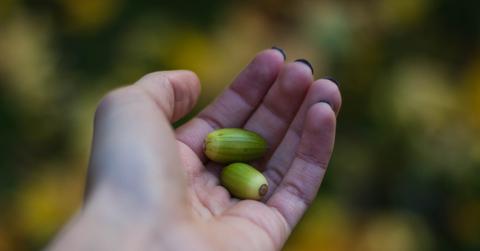How Seed Banks Grow and Protect the Food of Tomorrow
Wars, famine, and disease all have lasting ramifications on not just people who inhabit those areas but also the agriculture that grows in that region. Food banks are a way to protect plants from the unknowns of tomorrow.
Updated May 24 2019, 7:44 p.m. ET
One of the most important types of banks in the world have nothing to do with saving money. In fact, their contents have very little monetary value when they are deposited.
Seed banks store the future of global food security with libraries of agricultural material in their vaults. While some say that seed banking is not a perfect solution because it essentially freezes evolution, many scientists consider it to be our best chance for survival in case the worst should happen.
Since about 8000 B.C., crops have been crucial for many communities. Evidence of seed banks can even be traced as far back as 6750 B.C. when our ancestors needed to protect seeds from animals and unexpected extreme weather changes. Today, seed banking is still used as an insurance tool, and the system works like a bank’s safety account.
In modern seed banks, seeds are deposited for safekeeping until needed for withdrawal in the future. Some of these seeds can remain operable for decades if they are properly maintained. While collection and storage systems vary among seed banks and individual seeds, the scientists generally go through the painstaking task of collecting the right seeds, recording those seed details, allocating it a number and freezing the seeds in a special process.
But why go through all this trouble? Seed banking is still practiced for many reasons including political uncertainties, overpopulation, and environmental changes.
Seed banks can help countries in need.
Political discord is unfortunately still a common problem around the world. The importance of international seed banks during wartime has recently been brought to light during the current Syrian conflict. The International Center for Agricultural Research in the Dry Areas, a vital seed bank based in Aleppo, would have lost valuable seeds without the aid of an international seed bank that helped take the seeds just before war destroyed the area.
Seed banks assist with much needed crop production.
Overpopulation is another concern seed banks are working to alleviate since consumption is fast exceeding crop production. Wheat, corn and rice account for more than half of the world's diet. Of almost 10,000 species of plants used for agriculture, only 30 crops contribute to the world's food. The increase of consumption becomes a real concern when environmental uncertainties like disease, drought, and natural disasters threaten to wipe out entire crops.
Seed banks reinforce crop diversity and help plant species survive.
Crop diversity is probably one of the most important aspects of seed banks. More varieties offer a better chance of plant species survival. The monoculture nature of agriculture can be seen in the US as we’ve lost over 90 percent of fruit and veggie varieties since the 1900's. These limited options make our supply more susceptible to extinction by disease. Apart from fast spreading diseases, climate change is gradually affecting agriculture and seed banks offer a backup plan while plants try to keep up with the environmental changes.
The good news is that there are thousands of different seed vaults around the world and they often try to team up to ensure materials are not lost. As we saw in Syria, many of the seed banks are not impervious to destruction, whether natural or manmade. In response to this, the Svalbard Global Seed Vault, opened its doors in Norway on February 26, 2008.
Halfway between Oslo and the North Pole, this earthquake proof seed vault was built deep in a mountain on an island far away from lotuses and war. Close to Longyearbyen, the northernmost settlement on Earth, this “Doomsday Vault” offers a safekeeping option for seed banks all over the world by storing their backup seeds. This vault houses the world’s largest collection of crop diversity and can store up to 4.5 million varieties of seeds. It currently has about 930,000 samples from all over the world. Permafrost and thick rock ensure that the seed samples will remain frozen even during power failure. As a plan B option for the world's agriculture, it's a pretty solid choice.
This unique seed bank was created by the Crop Trust, which has been endorsed by groups such as the Bill and Melinda Gates Foundation. “The Crop Trust is a small organization with a big mission,” explains Marie Haga, Executive Director of the Crop Trust. As guardians of humanity’s insurance policy, this seed bank leaves politics at the door and you can find boxes from North Korea next to the US as well as Russian seeds boxed under Ukraine ones. To stay up to date with this growing seed library in the tundra, sign up for updates at CropTrust.org.
